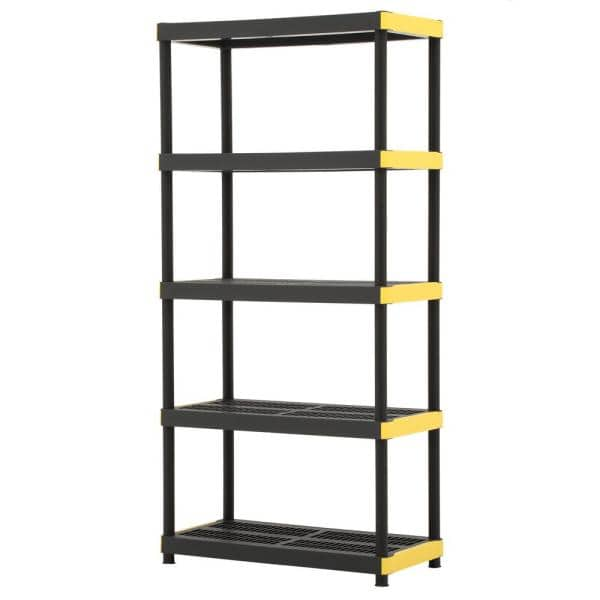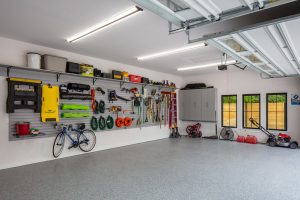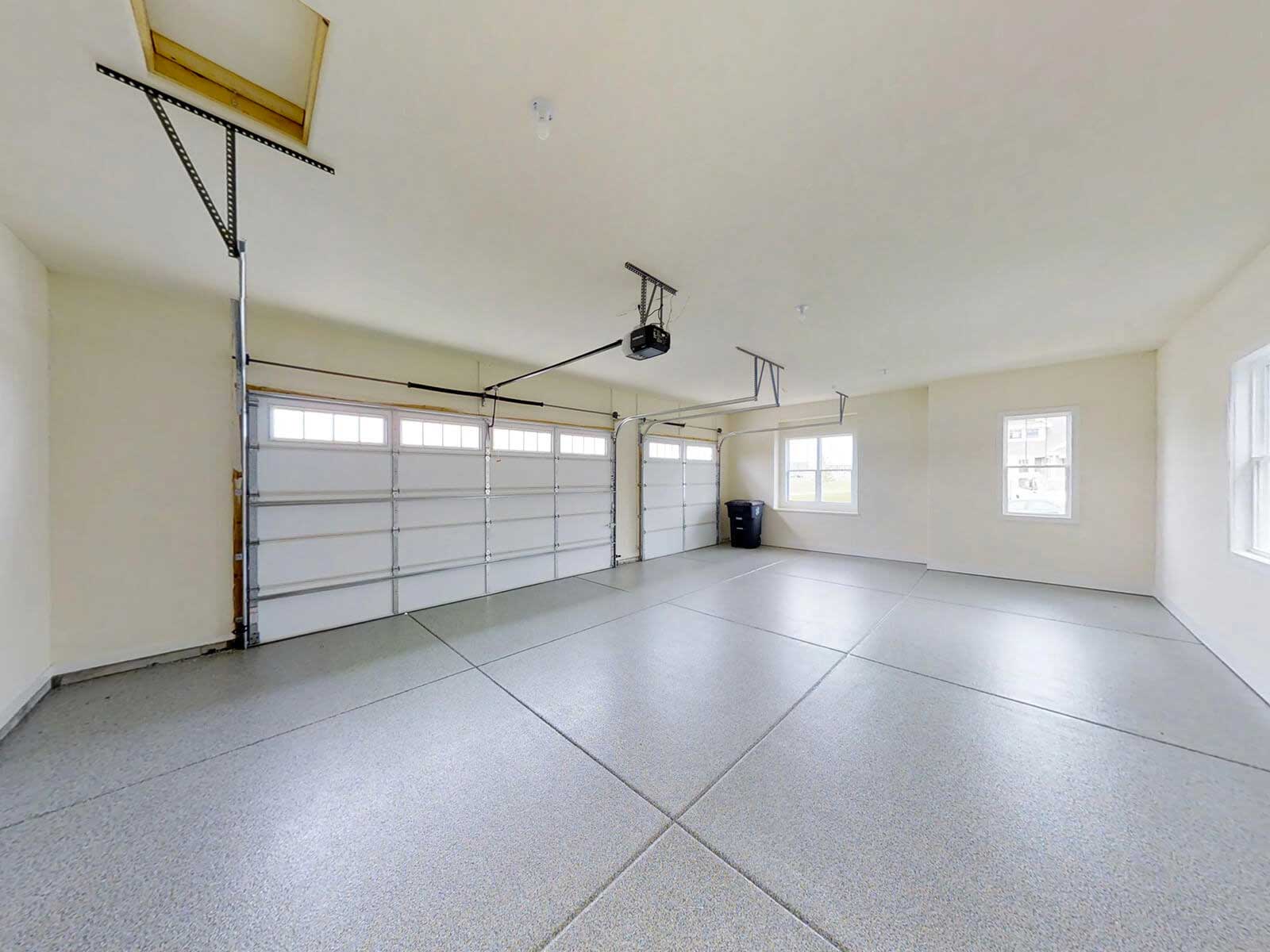
Whether you're building a garage or just looking for ways to organize your garage, the right garage shelving racks can help make it much easier to keep all your tools, equipment, and supplies organized. Choosing the right shelving unit depends on several factors, including the size of your garage, how often you use it, and what items need to be stored.
Garage wall storage racks
Wall-mounted garage shelving units make it easy to save floor space, especially in smaller spaces or areas with low ceilings. These garage shelves are easy to set up and can accommodate a wide variety of items.

These garage shelves may be made from wood, steel, or a combination. These shelves typically measure 12 to 24 inches deep. This gives you easy access and visibility to all the items stored on them.
They come in many different shapes and sizes so you can choose one that suits your garage's ceiling or walls. They're easy to find in big-box home improvements stores and are affordable.
Garage storage racks
If your garage has enough ceiling space, you can store items like Christmas decorations or snow blowers. These overhead garage storage shelves can support a lot of weight and are great for seasonal items you don't use the rest year.
This product is suitable for wooden ceiling beams. Installation is simple. If you need to hang things from the ceiling, hooks can be easily added.

Gladiator – GARS484TEG is our top pick for garage shelving racks. This wire-rack shelf can hold a lot and is simple to assemble. It has pre-welded parts for easy assembly and center braces to support the 48-by-18 inches shelves.
FAQ
What is the difference of a remodel and renovation?
Remodeling is making major changes to a particular room or area of a given room. A renovation is a minor change to a room or a part of a room. Remodeling a bathroom is a major job, but adding a faucet to the sink is a minor one.
Remodeling involves replacing a complete room or a part of a entire room. Renovating a room is simply changing one aspect of it. Remodeling a kitchen could mean replacing countertops, sinks or appliances. It also involves changing the lighting, colors and accessories. But a kitchen update could include painting the wall color or installing a new light fixture.
Why remodel my home when I can buy a brand new house?
While it's true that houses get less expensive each year you still need to pay the same price for the same square footage. You will pay more for the extra square footage, even though you might get more bang for you buck.
It's cheaper to maintain a house without much maintenance.
Remodeling your home instead of purchasing a new one can save you hundreds.
By remodeling your current home, you can create a unique space that suits your lifestyle. You can make your house more comfortable for yourself and your family.
How do I know if my house is in need of a renovation?
First, check to see whether your home was updated in recent years. It may be time for a renovation if your home hasn't been updated in a while. A remodel may be a better option if your house looks like new.
Your home's condition is also important. You should inspect your home for holes, peeling wallpaper, and broken tiles. However, if your home looks great, then maybe it's time to consider a remodel.
You should also consider the overall condition of your house. Is your house structurally sound? Do the rooms look good? Are the floors well-maintained? These are essential questions to consider when choosing the type of remodeling you want.
How should you renovate a home?
First, the roof. The plumbing is the second. Third, the electrical wiring. Fourth, the walls. Fifth, the floors. Sixth, windows. Seventh, the doors. Eighth is the kitchen. Ninth, bathrooms. Tenth: The garage.
Finally, after all this work is done, you'll have everything you need to get into the attic.
You might consider hiring someone who is skilled in renovating your house. Renovating your own house takes time, effort, and patience. It will also cost money. So if you don't feel like putting in the hours or the money, then why not let someone else do the hard work for you?
Renovations are not always cheap but can save you lots of money in long-term. A beautiful home can make your life easier.
What would it cost for a home to be gutted versus what it would cost to build one?
A home's contents are removed, such as walls, floors, ceilings and plumbing. This is usually done when you are moving into a new home and need to make some adjustments before you move in. Gutting a home is typically very expensive because so many things are involved in doing this work. Depending on what job you do, the average cost for gutting a house is $10,000 to $20,000
A builder builds a home by building a house frame-by-frame, then adds doors, windows, doors and cabinets to the walls. This is typically done after purchasing lots and lots of lands. Building a home usually costs less than gutting and can cost between $15,000 and $30,000.
It comes down to your needs and what you are looking to do with the space. If you are looking to renovate a home, it will likely cost you more as you will be starting from scratch. But if your goal is to build a house, you won't need to disassemble everything and redo everything. Instead of waiting for someone to tear it down, you can make it exactly how you want.
Remodeling a kitchen or bathroom is more expensive.
Remodeling a bathroom or kitchen is an expensive proposition. It might be more cost-effective to upgrade your home than you think, given how much you spend each month on energy bills.
An inexpensive upgrade can save you thousands of dollars every year. A few simple changes, such as adding insulation to walls and ceilings, can reduce heating and cooling costs by up to 30 percent. Even a modest addition can improve comfort and increase resale value.
The most important thing to keep in mind when planning for renovations is to choose products that are durable and easy to maintain. Materials such as porcelain tile, stainless steel appliances, and solid wood flooring last longer and require fewer repairs than vinyl or laminate countertops.
It is possible to reduce utility costs by replacing older fixtures with more modern models. Low-flow showerheads or faucets can help reduce water usage by up 50 percent. Replacing inefficient lighting with compact fluorescent bulbs can cut electricity consumption by up to 75 percent.
Statistics
- Windows 3 – 4% Patio or backyard 2 – 5% (rocketmortgage.com)
- Attic or basement 10 – 15% (rocketmortgage.com)
- 55%Universal average cost: $38,813Additional home value: $22,475Return on investment: 58%Mid-range average cost: $24,424Additional home value: $14,671Return on investment: (rocketmortgage.com)
- $320,976Additional home value: $152,996Return on investment: 48%Mid-range average cost: $156,741Additional home value: $85,672Return on investment: (rocketmortgage.com)
- 57%Low-end average cost: $26,214Additional home value: $18,927Return on investment: (rocketmortgage.com)
External Links
How To
How can you budget for a bathroom?
The most important aspect of any remodeling project is ensuring you can afford it. How will you pay for it later if your budget isn't available now?
Planning and understanding the costs of a bathroom remodel requires meticulous planning. A bathroom remodeling project is quite expensive, and several factors contribute to its cost.
Labor is one of the largest expenses. The size of the job, as well as whether the contractor is a professional or a DIYer, will impact the labor costs. A professional contractor will charge more an hour than a DIYer due to their experience and expertise.
Materials are another major expense. Depending on your type of material, prices may range anywhere from $100 to $1000 per square foot.
The final factor is the cost for energy. This includes both electricity and gasoline bills. Peak demand periods are when energy costs can rise.
You should also consider the time involved in completing the project. Bathroom renovations are usually a time-consuming project that requires patience and patience. While some projects may take several weeks to complete, others may take months.
In addition to these three major categories, there are smaller items such as paint, wallpaper, flooring, etc., which add to the project's overall cost.
Here are some tips for bathroom remodeling projects:
-
You should determine your budget before you start any remodeling project. It doesn't make a difference if you have the money or not. The key is to set a realistic budget, so you know exactly where you stand financially.
-
Plan Ahead - If possible, try to schedule your bathroom remodel for the off-season. The winter months typically bring lower energy usage rates, meaning you will save money on heating and cooling costs. Even better, consider scheduling your remodel during the night when less people are using the restroom.
-
Shopping around - Once you've established your budget, start looking at potential vendors. Many options are available to choose from, including local retailers, online merchants, and even family members who might be willing and able to assist you in the project.
-
Choose An Estimator - Once you have identified all your potential vendors, you should contact each individually to get estimates. In order to ensure that you get competitive pricing, it is important to obtain multiple quotes.
-
Get Multiple Estimates - After receiving your initial estimates, you should compare them against one another to see which vendor offers the lowest price. Once you have found this vendor, you should ask them to provide you with a written estimate.
-
You should include all costs in your estimate. Include details about fees, taxes and permits that may be required in your area.
-
Pay attention to the little details when planning your bathroom remodel. You might need a new toilet. Do you have enough space for a shower curtain rod in your bathroom? These changes can easily add to the project's total cost.
-
Take into account insurance - It is important that you check with your insurance company about the extent of your bathroom remodel to ensure you have sufficient coverage. Avoiding insurance can lead to additional costs down the line.
-
Hire A Professional - Finally, once you have completed your bathroom remodel, always hire a professional to install the final fixtures. You may be able handle the job, but it is more efficient to hire a professional to do the job properly.